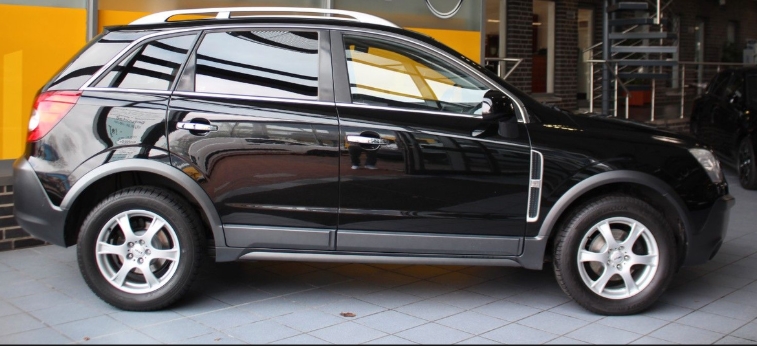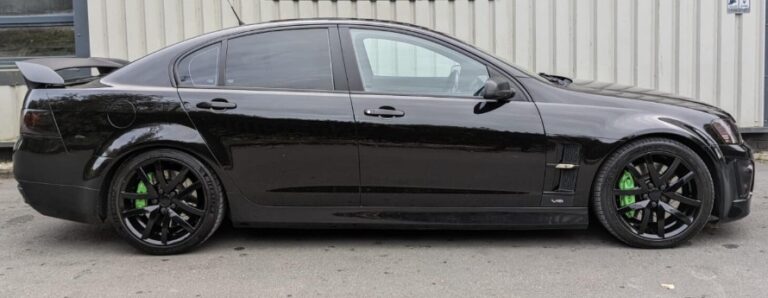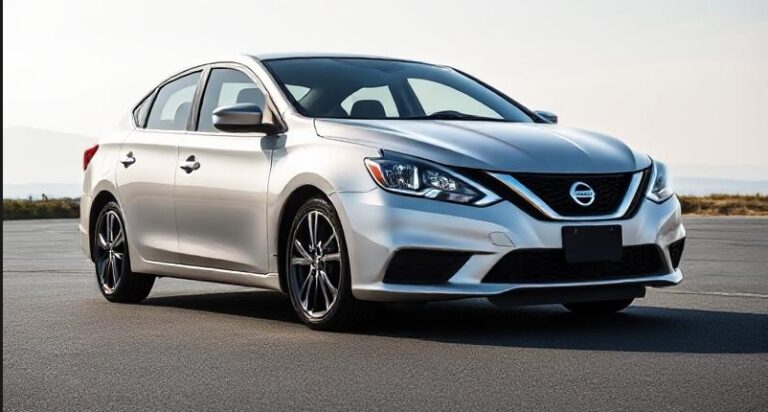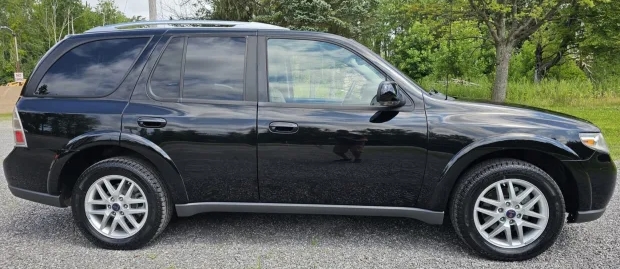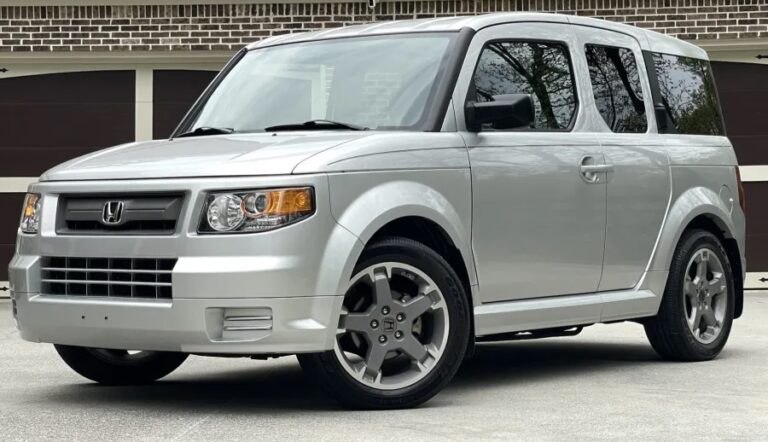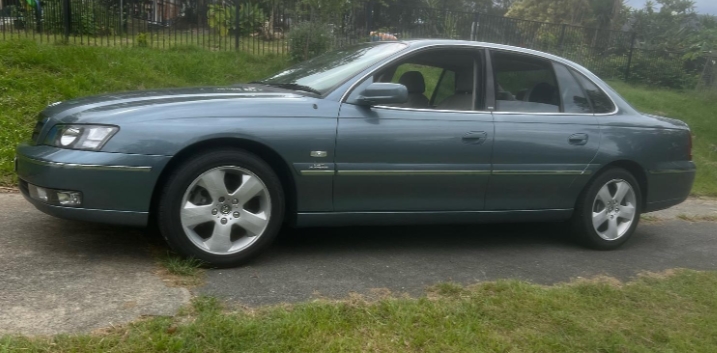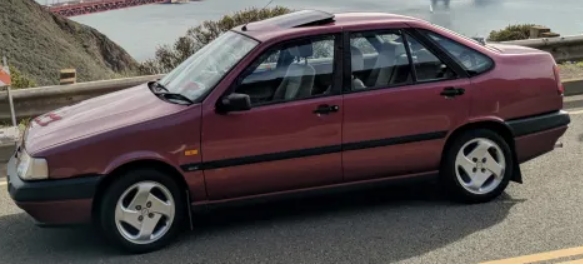A Global Contender: The Complete Evolution of the Opel Antara
In the mid-2000s, the automotive world was undergoing a seismic shift. The traditional family saloon and estate were rapidly being challenged by a new class of vehicle: the crossover sport utility vehicle (SUV). Consumers craved the high driving position, practical interior, and rugged looks of an off-roader, but with the comfort, efficiency, and road manners of a conventional car. Into this burgeoning market, Opel, General Motors’ primary European marque, launched its contender: the Antara. Produced from 2006 to 2015, the Antara was a product of GM’s global platform strategy, a vehicle designed to be competent, comfortable, and versatile. Its story is one of international collaboration, significant mid-life evolution, and a constant battle against class-leading rivals.
The Genesis: A Global Platform Takes Shape (2005-2006)
The groundwork for the Antara was laid with the Opel Antara GTC (Gran Turismo Crossover) concept, unveiled at the 2005 Frankfurt Motor Show. This sleek, three-door concept showcased a dynamic and sporty design language that hinted at Opel’s ambitions to create an SUV that was more about on-road poise than off-road prowess.
The production model, which debuted at the Paris Motor Show in 2006, was a more conventional five-door vehicle, but it retained the concept’s core athletic stance. Crucially, the Antara was not a standalone project. It was built on General Motors’ Theta platform, a global architecture designed to underpin a variety of compact and mid-size SUVs across GM’s various brands. This strategy allowed for significant cost savings through shared development and manufacturing.
The Antara’s closest sibling was the Chevrolet Captiva. While they shared the same platform, underlying structure, and were built in the same factory in Bupyeong, South Korea, they were strategically differentiated. The Captiva was positioned as the larger, more family-oriented option, offering a seven-seat layout. The Antara, with its shorter rear overhang and strict five-seat configuration, was marketed as the more premium, stylish, and dynamic European-focused alternative. This global DNA meant the Antara was sold under various names worldwide, including the Vauxhall Antara in the United Kingdom, the Saturn VUE in North America (second generation), and the Holden Captiva 5 in Australia.
The First Iteration: Pre-Facelift (2006 – 2010)
Upon its launch in late 2006, the first-generation Antara entered a fiercely competitive market segment dominated by the Honda CR-V, Toyota RAV4, and the soon-to-be-released Ford Kuga and Volkswagen Tiguan. Opel aimed to distinguish the Antara with a blend of clean design, a well-equipped interior, and a choice of capable powertrains.
Powertrains: The initial engine lineup was designed to cater to a range of European tastes, with a focus on both petrol and, crucially, diesel power.
2.4-litre Ecotec Petrol: This was the entry-level petrol engine, a four-cylinder unit producing 140 PS (138 hp). It provided adequate performance but was often criticized for its modest fuel economy and lack of refinement under load. It was typically paired with a 5-speed manual transmission.
3.2-litre Ecotec V6 Petrol: At the top of the range sat a powerful 3.2-litre V6 engine, producing a healthy 227 PS (224 hp). This engine gave the Antara brisk acceleration and effortless cruising ability, exclusively paired with a 5-speed automatic transmission and an all-wheel-drive system. It positioned the Antara as a comfortable, long-distance tourer.
2.0-litre VCDi Diesel: The volume seller across Europe was the 2.0-litre common-rail diesel engine, sourced from VM Motori. It was available in two states of tune: a base version with 127 PS (125 hp) and a more powerful variant with 150 PS (148 hp). The latter was the most popular choice, offering a strong balance of torque, performance, and reasonable running costs. Both diesel engines could be had with a 5-speed manual or a 5-speed automatic gearbox.
Drivetrain and Handling: The Antara featured an intelligent all-wheel-drive (AWD) system on most models, though front-wheel-drive (FWD) was available on the base diesel. The AWD system operated primarily as a front-wheel-drive vehicle for maximum efficiency, but an electro-hydraulic clutch could automatically send up to 50% of the engine’s power to the rear wheels when it detected a loss of traction. This on-demand system, combined with features like Descent Control System (DCS), gave the Antara a degree of all-weather confidence and light off-road capability.
Trim Levels: Opel structured the Antara’s trim levels in its typical hierarchy, offering a clear progression of equipment and luxury.
Essentia (or E in some markets): The entry-level model was fairly basic. It typically included 16-inch steel wheels, manual air conditioning, a CD player, front electric windows, and a comprehensive suite of safety features including ABS, Electronic Stability Program (ESP), and multiple airbags.
Enjoy: This mid-range trim was the sweet spot for many buyers. It added desirable features such as 17-inch alloy wheels, automatic climate control, cruise control, front fog lights, roof rails, and an upgraded interior with more premium trim inserts.
Cosmo: The top-of-the-line Cosmo trim elevated the Antara into near-premium territory. It came standard with 18-inch alloy wheels, full leather upholstery, heated front seats, parking sensors, automatic headlights and windscreen wipers, an onboard computer, and chrome exterior detailing.
The Mid-Life Facelift: A Much-Needed Update (2011 – 2015)
By 2010, the compact SUV market had evolved significantly. Newer, more efficient, and more technologically advanced rivals had emerged, making the original Antara feel dated, particularly in its powertrain and interior design. In response, Opel launched a major facelift for the 2011 model year, addressing many of the original’s shortcomings.
Exterior and Interior Enhancements: Externally, the changes were subtle but effective. The front end was redesigned with a new, bolder grille featuring Opel’s signature chrome wing, revised headlights, and restyled fog lamps. At the rear, the taillights received updated graphics.
Inside, the improvements were more substantial. The centre console was completely redesigned for better ergonomics and a more modern look. An electronic parking brake replaced the old manual lever, freeing up valuable storage space. Material quality was improved, with more soft-touch plastics and refined trim options. Infotainment systems were also updated, with better connectivity and optional integrated satellite navigation.
The Powertrain Revolution: The most significant upgrades were under the bonnet. The entire engine lineup was overhauled to meet stricter Euro 5 emissions standards and to deliver better performance and efficiency.
2.4-litre Ecotec Petrol (Revised): The entry-level petrol engine was updated, with power now increased to 167 PS (165 hp). Mated to a new 6-speed manual or 6-speed automatic transmission, it felt more responsive and was slightly more economical.
2.2-litre CDTI Diesel: The old 2.0-litre diesel was replaced by a brand new, Opel-developed 2.2-litre CDTI engine. This was a huge step forward in terms of refinement, power, and efficiency. It was offered in two outputs:
A 163 PS (161 hp) version, available in both FWD and AWD configurations.
A high-output 184 PS (181 hp) version, which came standard with AWD. These new diesel engines provided immense torque and transformed the Antara’s driving experience, making it a far more competitive and effortless performer. The old 5-speed gearboxes were retired in favour of new 6-speed manual and automatic units, further improving fuel economy and drivability. The 3.2-litre V6 was discontinued in most European markets due to low demand and emissions regulations.
Revised Trim Levels: The trim structure remained largely the same (Essentia, Enjoy, Cosmo), but the standard equipment levels were increased across the board. For example, 17-inch alloy wheels became standard on the base model, while higher trims received new features like USB connectivity and enhanced driver information displays. Special editions, such as the “SE Nav” in the UK, were often introduced to bundle popular options like navigation and upgraded wheels at a competitive price.
.

.
Market Reception, Discontinuation, and Legacy
Throughout its nine-year production run, the Opel Antara was a competent and solid, yet often overlooked, player in its class. Its strengths lay in its comfortable ride, spacious interior for five, and strong value proposition, particularly on the second-hand market. The post-2011 models, with their powerful and refined 2.2 CDTI engines, were particularly capable all-rounders.
However, the Antara struggled to capture the public’s imagination in the same way as its key rivals. The VW Tiguan offered a more premium feel and superior driving dynamics, the Ford Kuga was sharper to drive, and Japanese competitors like the Honda CR-V and Nissan Qashqai had built formidable reputations for reliability and innovation. The Antara, a product of a global GM parts bin, sometimes lacked a distinct character and its interior, even after the facelift, felt a step behind the class leaders by the end of its life.
Production of the Opel Antara ceased in 2015. GM did not immediately replace it in the European market, leaving a gap in its SUV lineup. Its spiritual successor, the Opel Grandland X, would not arrive until 2017, and it was a completely different vehicle, born from Opel’s new ownership under the PSA Group (now Stellantis).
Today, the Opel Antara represents a specific era of automotive manufacturing—one defined by global platform sharing. It was a vehicle that tried to be a jack of all trades: a comfortable family car, a stylish crossover, and an all-weather workhorse. While it may not have topped the sales charts, the evolution from its initial 2006 form to the much-improved 2011 facelift model shows a clear commitment by Opel to adapt and refine. For those seeking a capable, spacious, and affordable used SUV, the later Antara models, in particular, remain a surprisingly compelling and sensible choice.
